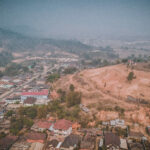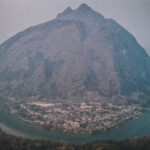Phonsavan town itself is little more than a base for exploring the nearby Plain of Jars. Those mysterious giant stones are empty inside and archaeologists assume that they were used for burial rituals. Several quarry sites have been recorded, usually close to the jar sites.
The area was heavily bombed during the Second Indochina War, with some jars destroyed or looted. However, many of them (around 2500) still remain. Around 80% of the jars were carved from quarried sandstone, with the rest made of granite, limestone, or conglomerate rock. Similar sights have been found in the Assam region of India, southern China, and Vietnam, which suggests that the Austro-Asiatic people who created these structures, may have migrated along a trade route across Asia, finally reaching Laos.
It is believed that there are over 90 jar sites in Xiangkhouang Province, most of them being off-limits to tourists. Each site has from one to 400 stone jars. Before opening the three most popular sites, they had to be cleared of UXO (unexploded ordnance). The first one was opened only in 1992 and in 2019 the archaeological ruins are on UNESCO World Heritage List.
The legend
As always, if there is a mysterious place, so there is also a legend. The giants that inhabited the area were ruled by a king, named Khun Cheung, who fought a long battle against an enemy. After the victory, he supposedly ordered the creation of the jars to brew and store huge amounts of alcohol made from rice to celebrate his victory.
When to go?
The best time to visit Laos is between November and April, as it’s the dry season. However, try to avoid February and March if possible. It doesn’t rain, but it’s the time when the burning season starts and dense haze hangs over the mountains and the air quality is regularly rated as unhealthy.
How to get there?
Phonsavan is about 260 km away from Luang Prabang, 235 km from Vang Vieng, and 350 km from Vientiane. You will easily find buses going there in all above mentioned cities but be prepared for many hours onboard. Even though the distances aren’t huge, the roads are narrow, winding, and sometimes in very bad condition.
I went there when doing the North East Loop on a rented motorbike but I don’t recommend that option. Especially the section between Luang Prabang and Phou Khoun is full of trucks and extremely dusty. Better to stay on a bus and enjoy the views through the window. For bus connections, check 12Go.Asia.
Where to stay?
I arrived without a reservation at Kongkeo Guesthouse and took a private room for 200 LAK. They offered also a bed in a dormitory for 70 LAK but I had to work online on that night. It was a nice room with a double bed and mosquito net and a hot shower with really good water pressure which isn’t a norm in Laos. Laundry is available too, at 20 LAK per kilogram.
How long to stay?
One full day is enough to check out the three major sites of the Plain of Jars and the museum or visit the silk farm. If you plan to see the remains of the old kingdom in Muang Khoun or do the Ban Phakheo hike, you will need to add 1-2 days more.
Interesting sights
Plain of Jars is the main attraction bringing tourists to Phonsavan and I have to agree, it’s well worth it. All three major sites can be easily visited independently in half a day on a rented motorbike or you may join a full-day tour, which often includes a visit to Ban Napia (known as spoon village where the locals recycle metal scrap to make spoons and other objects) and Muang Khoun (former small kingdom of Xieng Khuan). Your hotel or homestay will certainly help you out with organizing both options but you can also ask directly at the travel agents located on the main road.
Plain of Jars: site 1
The biggest, most popular and my least favorite site. Maybe I was simply unlucky, but at the time of my visit, two buses full of Chinese tourists arrived, which took away all the charm of that place. In the morning hours, the area was also covered in fog so couldn’t see any nice views from the hill. Anyway, there are over 300 jars here, a few bomb craters and a small cave with two holes that are thought to have been chimneys for a crematorium. Don’t forget to step into the visitor center to learn more about the history and archaeological research. Entry ticket: 20.000 LAK.
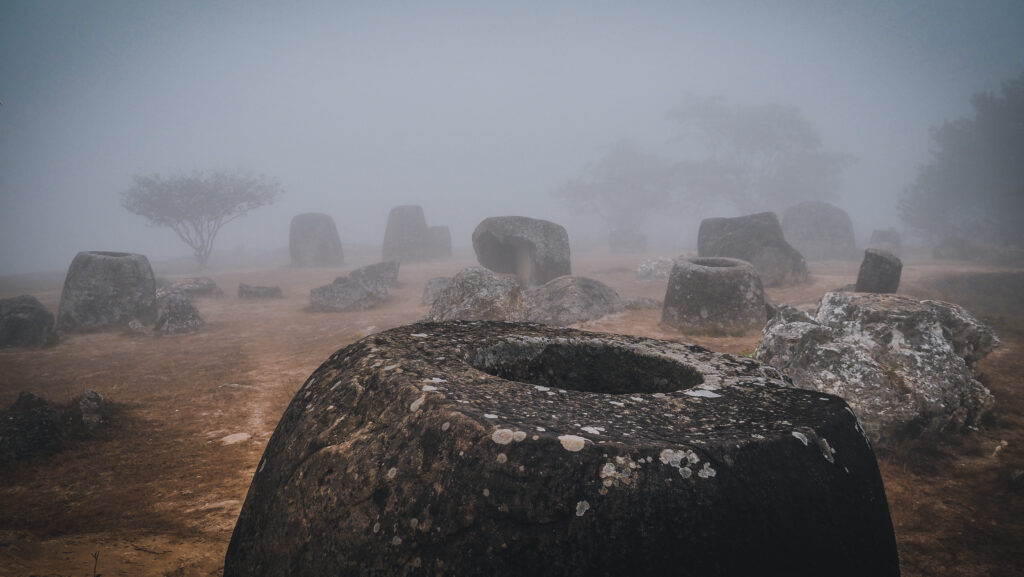
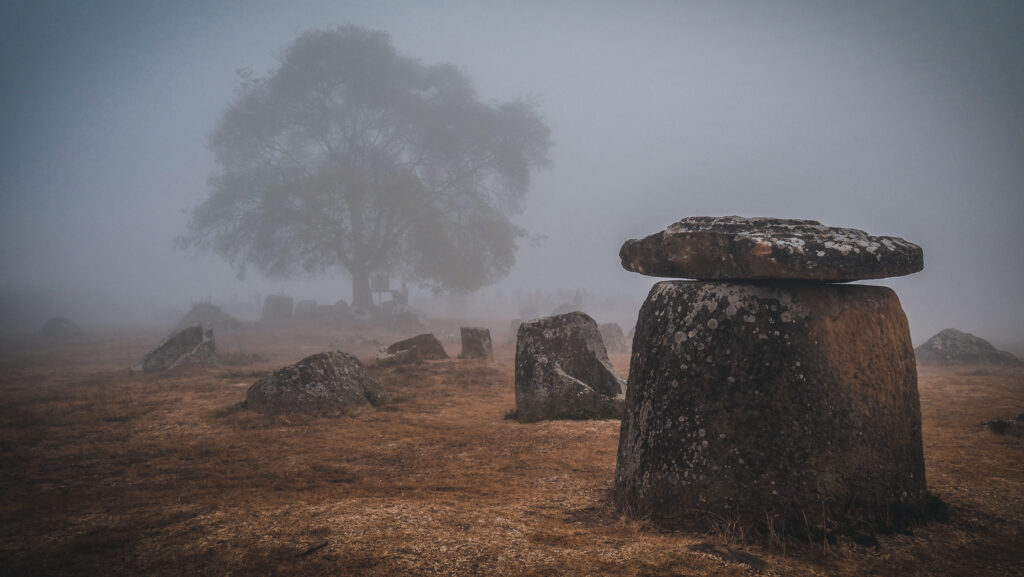

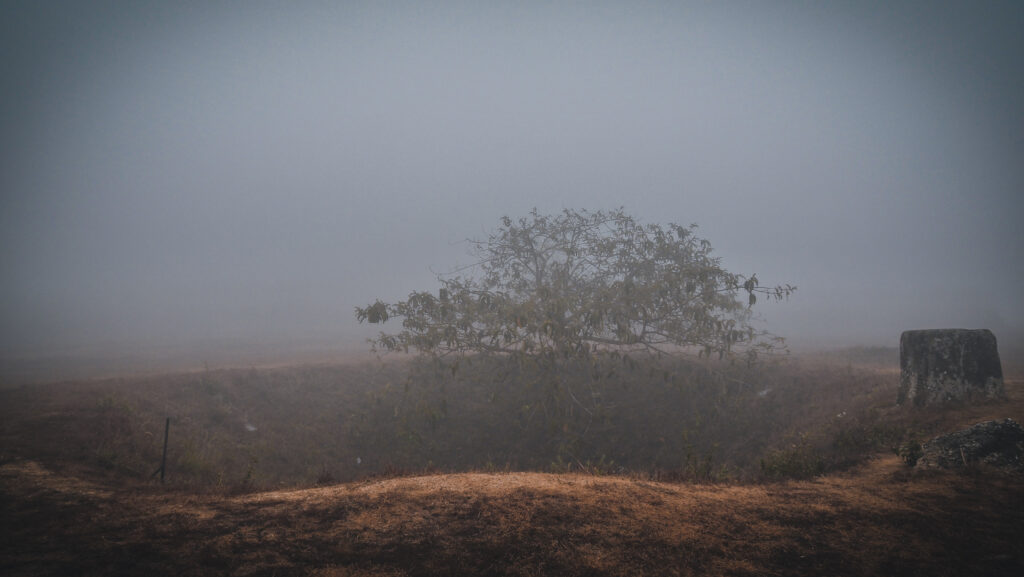


Plain of Jars: site 2
It’s a pair of small hills with jars on top of both of them. A very atmospheric place with a nice panorama of surrounding hills and farmlands. Entry ticket: 20.000 LAK.


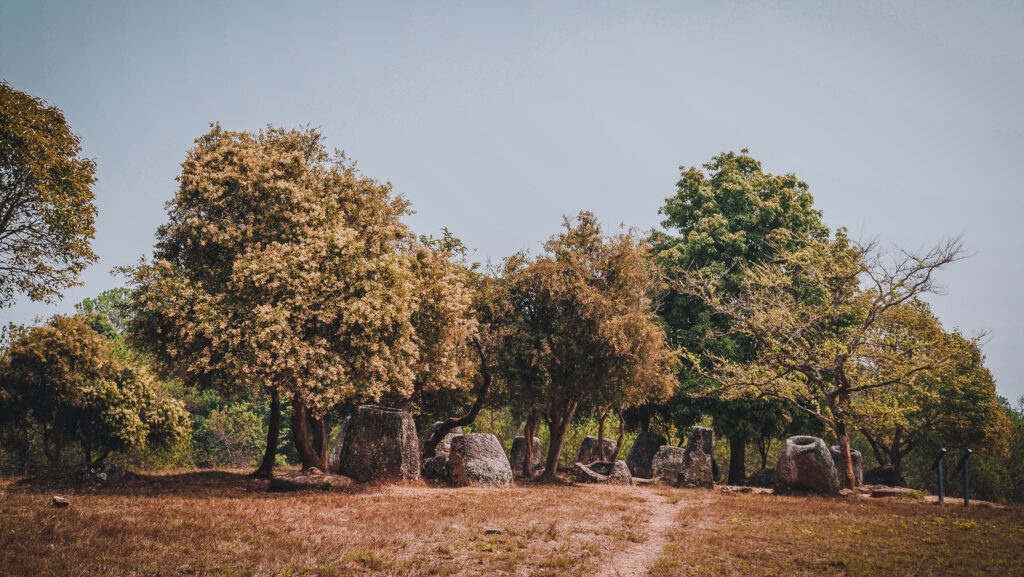

Plain of Jars: site 3
A beautiful half-kilometer walk through rice paddy fields brings you to that site. Picturesque jars sit under a canopy of trees. Very nice place and the least popular as I was there completely alone. Entry ticket: 20.00 LAK.
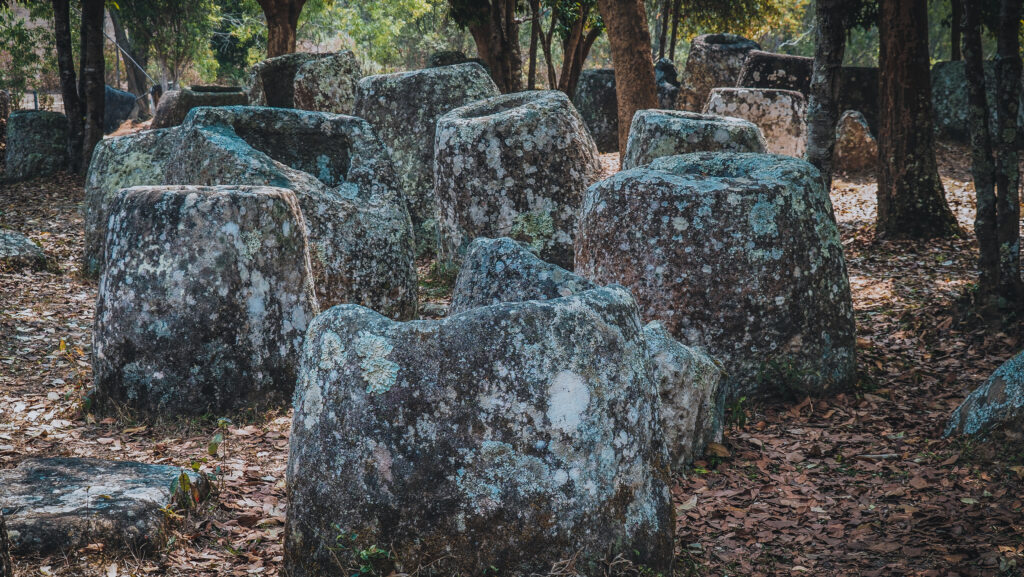


Ban Napia
Also known as spoon village where the locals recycle metal scrap to make spoons and other objects. It’s about 10 minute’s ride from site 3 of Plain of Jars. Only if you have some time to kill.
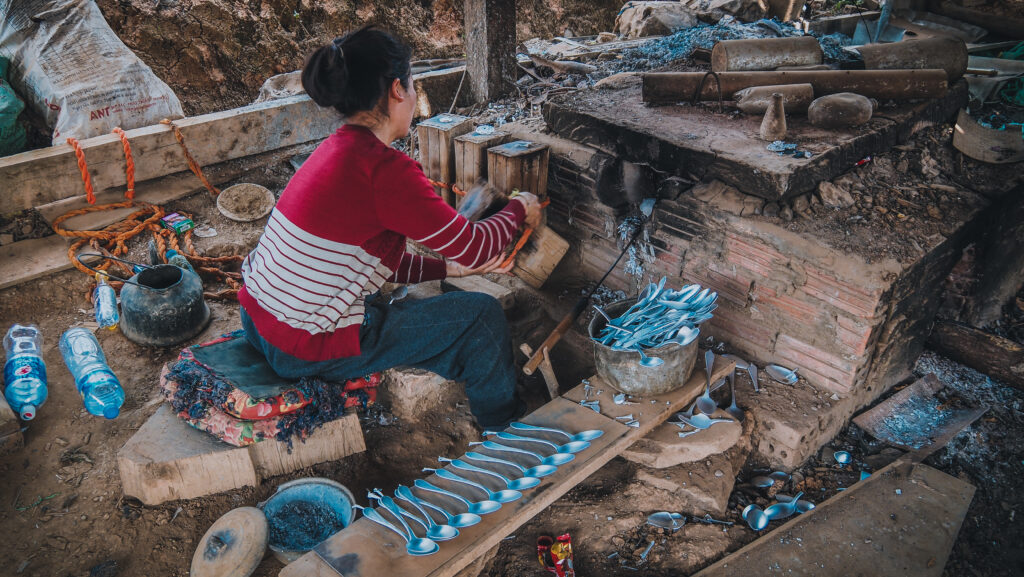
Xieng Khouang Provincial Museum
One of the most interesting museums in Laos, with extremely nice members of staff, one of whom showed me around. On the ground floor, there is information about the famous Plain of Jars and the history of the Xieng Khuang kingdom. On the first floor, you will learn more about the war period as well as about the local customs of ethnic communities living in that area. The entrance ticket costs 15.000 LAK.
MAG UXO Visitor Information Center
I highly recommend visiting this place to learn more about the war era and the effects of UXO (unexploded ordnance) on people’s lives. The USA dropped more bombs on Laos during the Vietnam War than they did on Germany and Japan combined during World War II. It makes Laos, per person, the most heavily bombed country in history. Over 25,000 people have been killed or injured by UXO since the bombing ceased. On the second floor, you may see a few interesting videos about the organization and its work in Laos. Learn more on their website.
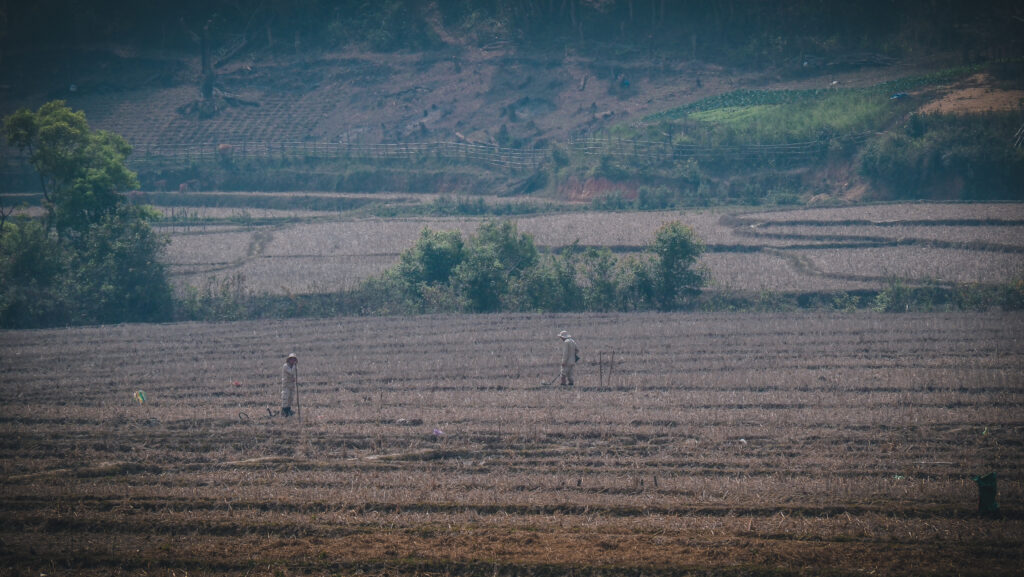
Mulberries Silk Farm
I arrived outside of guided tours hours but still was welcomed by a kind woman who brought me through the entire process of working with silk. They train and involve Lao village producers in silk production and by that, improve their livelihood and standard of living. Some wonderful products are available for purchase in the shop. Guided tours are at 9:30, 11:00, 14:00 and 15:30 and are free of charge.
Ban Phakheo hike
2 days hike to the Hmong village of Ban Phakheo, including a visit to nearby Jar Site 52 and Tad Ka Waterfall. When I asked one of the tour agents on Whatsapp, I was quoted a price of 180 USD for a group of 1-2 people. I believe it’s way too much for a hike in Laos so I simply went to Ban Phakheo on a motorbike. Look for “Turn-off to Tad Ka Waterfall” in Google Maps and follow the dirt road for about 1,5 km when you will have the junction to Pakheo. Turn right and just follow the dirt road passing by some other small villages on the way, until you reach your destination. The road is in decent condition and can be easily done on Honda Wave or similar. The panoramic views around the mountains are amazing and the location of Ban Phakheo is superb too. It’s well worth visiting here independently, even though the hike must be nice too.

Muang Khoun
Muang Khoun, known also according to its old name as Xieng Khuang, was once the royal seat of the small kingdom of Xieng Khuang. It was a large and beautiful city protected by wide moats and forts occupying the surrounding hills. There were sixty-two pagodas and their stupas, of which the flanks apparently kept treasures.
As a result of long years of invasions by Thai and Vietnamese soldiers, pillaging by Chinese bandits in the nineteenth century and a rain of bombs during the 2nd Indochina War, nearly nothing was left of the kingdom’s exquisite temples. Today, the remains that remind us of the kingdom’s former glory are Pha That Foon, That Chomphet, Wat Phiavat and Wat Si Phom.
Find more info in a separate post.
Tham Piew Cave
It’s nearly 1.5 hour’s drive from Phonsavan and if it’s on your way, it makes sense to stop there but I wouldn’t go just for the cave itself. It’s a historical site that was the scene of a human tragedy during the war. In 1968 the US Air Force fired a missile directly into the cave, which at the time was used as a shelter. 374 people were killed. The interior of the cave is filled with small rock piles, as a memorial to all those who died.


